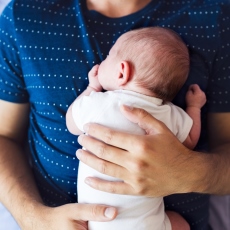
What are birth defects?
A birth defect is a problem that happens while a baby is developing in the mother's body. Most birth defects happen during the first 3 months of pregnancy. One out of every 33 babies in the United States is born with a birth defect.
A birth defect may affect how the body looks, works, or both. Some birth defects like cleft lip or neural tube defects are structural problems that can be easy to see. Others, like heart disease, are found using special tests. Birth defects can range from mild to severe. How a birth defect affects a child's life depends mostly on which organ or body part is involved and how severe the defect is.
- Birth Defects (National Library of Medicine)What are birth defects? A birth defect is a problem that happens while a baby is developing in the mother's body. Most birth defects happen during the first ...
- Craniofacial Abnormalities (National Library of Medicine)... of the skull and face. Craniofacial abnormalities are birth defects of the face or head. Some, like cleft ... palate, are among the most common of all birth defects. Others are very rare. Most of them affect ...
- ... during pregnancy can reduce the risk for certain birth defects. These include spina bifida, anencephaly , and some heart ... This is because many pregnancies are unplanned. Also, birth defects often occur in the early days before you ...
- ... whether the baby is at risk for certain birth defects. ... determine the chance of your baby having a birth defect, the test also factors in: Your age Your ...
- Myelomeningocele is a birth defect in which the backbone and spinal canal do not close fully before birth. The condition is a type of ...
- An omphalocele is a birth defect in which an infant's intestine or other abdominal organs are outside of the body because of a hole in the ...
- What Are Birth Defects? (Centers for Disease Control and Prevention)Birth defects are common, costly, and critical conditions that affect 1 in every 33 babies born in the ... Read more about what we have learned about birth defects and how women can improve their chances of ...
- Neural Tube Defects (National Library of Medicine)Neural tube defects are birth defects of the brain, spine, or spinal cord. They happen in the first month of pregnancy, often before a woman even ... are usually either stillborn or die shortly after birth. Another type of defect, Chiari malformation, causes the brain tissue to extend ...
- Down Syndrome (National Library of Medicine)... with Down syndrome might have one or more birth defects or other health problems. Some of the more ... classes. Since people with Down syndrome can have birth defects and other health problems, they will need regular ...
- Gastroschisis is a birth defect in which an infant's intestines are outside of the body because of a hole in the abdominal wall. ... to an omphalocele . An omphalocele, however, is a birth defect in which the infant's intestine or other abdominal ...



